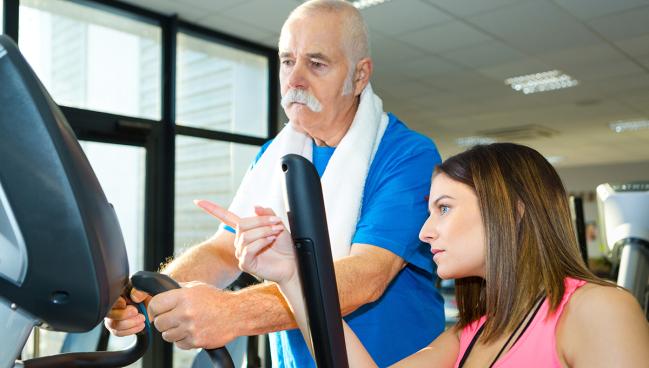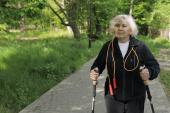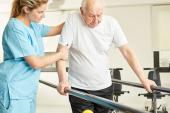Exercise Training: The Devil’s in the Details for CAD Patients
While intensity didn’t appear to matter in this network meta-analysis, location did: in-person programs had the most impact.

Exercise training, whether at high or moderate intensity, appears to impart better health-related quality of life (QoL) for patients with coronary artery disease, a network meta-analysis suggests. However, in-person programs appear to be more beneficial than at-home interventions.
When done face-to-face, the training is associated with not only better QoL, but also reductions in depressive and anxiety symptoms, researchers reported in a paper published this month in the European Heart Journal.
Esmée A. Bakker, PhD (University of Granada, Spain, and Radboud university medical center, Nijmegen, the Netherlands), who served as first author of the study along with Angel Toval, PhD (University of Granada), told TCTMD that mental health challenges and poor quality of life are common concerns among people with coronary artery disease.
As exercise scientists and epidemiologists, she said, “we thought, well, exercise is hopefully the solution.”
The investigators chose to perform a network meta-analysis to compare the many interventions under study—this method allowed them to consider not only the type of training but also where it took place.
At the outset, Bakker said, they expected that approaches combining aerobic activity and resistance would outperform those that contained a single element, and that there would be differences between high- and moderate-intensity exercise. Surprisingly, “that was not the case,” she noted. Also unexpected was the “substantial difference” they saw between in-person and home-based programs.
Home-based exercise training naturally became more common amid the isolation of the COVID-19 pandemic, Bakker pointed out. In that era’s wake, remote programs continue to be popular despite mixed evidence to support them.
This popularity is understandable, as many CAD patients find it hard to commute to a facility, she observed. “For some people it’s very difficult to get to the cardiac rehabilitation or exercise center because they have to travel or they cannot travel by themselves so a partner has to go with them. [This] makes it very complicated.”
A home-based approach is “a really nice alternative and I think fills a very important [need] and . . . it works,” Bakker added. The key will be figuring out which elements of at-home interventions succeed and which don’t.
The Elements of Exercise
For their network meta-analysis, the investigators included 36 randomized controlled trials. Most of the studies tracked health-related QoL (n = 30), whereas 15 assessed depression and nine anxiety. Cognition and sleep were measured in just two studies, whereas none looked at brain structure/function. Studies of at-home interventions used a mixed bag of strategies: some used apps, some had an initial in-person session with a trainer before switching to home, and others were entirely home-based.
In-person high-intensity interval training alone or paired with resistance and moderate-intensity training each were significantly associated with better QoL (standard mean differences [SMDs] of 1.53, 0.44, and 0.44, respectively) compared with no exercise. In-person stretching-toning-balance training (eg, yoga) and moderate-intensity training paired with resistance had no apparent impact on QoL, nor did home-based programs.
In-person exercise, compared with no exercise, was linked to significant improvements in health-related QoL (SMD 0.51), depressive symptoms (SMD -0.55), and anxiety symptoms (SMD -1.16). Home-based programs, on the other hand, appeared to be no more beneficial than usual care.
The findings held true in analyses looking at intervention duration and volume as well as those that excluded studies with a high risk of bias.
For some people it’s very difficult to get to the cardiac rehabilitation center because they have to travel or they cannot travel by themselves so a partner has to go with them. Esmée A. Bakker
Bakker said it’s hard to know why in-person programs were more effective, but that the difference likely relates to adherence.
“We know from experience that if people do the exercises at home, then they [tend to] do them less well than . . . when they go to the exercise facility and they are there with the trainer,” she said, adding that it’s hard to track whether patients reach the right threshold of intensity when the interaction is remote. “With the trainer, there’s someone next to them telling them, ‘You have to do a little bit more to reach it, or you have to slow down a little bit because you are going too high.’” In addition, the in-person format offers a social aspect with opportunities for interaction, said Bakker.
She suggested that going forward, the best design for at-home programs might be a hybrid approach that involves some face-to-face training in addition to independent exercise.
Future research also must consider “brain health” in more detail, the investigators urge. “Our systematic review has identified that most of the current research on exercise brain-related outcomes in CAD patients is focused on health related-QoL, depression, and anxiety and highlights the need of studies assessing other dimensions of [brain-related outcomes], such as brain structure/function, cognition, and sleep.”
Caitlin E. Cox is News Editor of TCTMD and Associate Director, Editorial Content at the Cardiovascular Research Foundation. She produces the…
Read Full BioSources
Toval A, Bakker EA, Granada-Maia JB, et al. Exercise type and settings, quality of life, and mental health in coronary artery disease: a network meta-analysis. Eur Heart J. 2025;Epub ahead of print.
Disclosures
- The researchers report no relevant conflicts of interest.





Comments